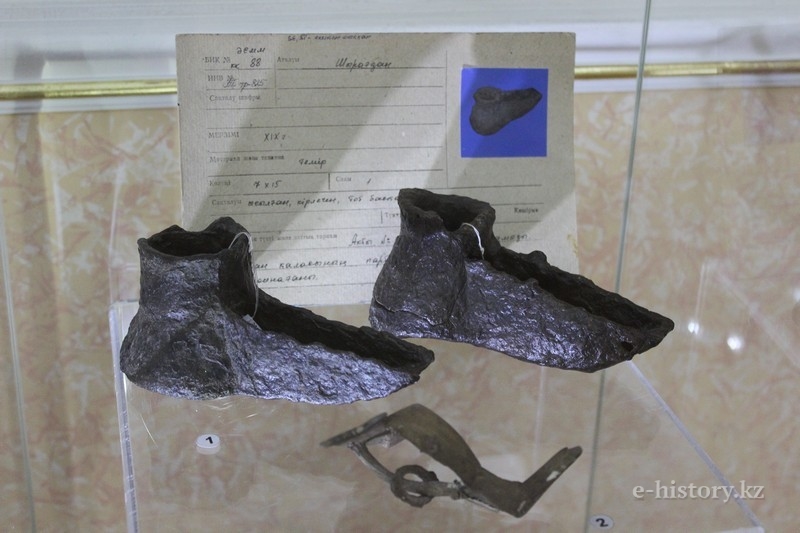
20.03.2015
1116
The Museum of the First President of Kazakhstan hosts the exhibition “The Lights of Millennia” representing the collection of “The Azret Sultan” Historical and Cultural Museum-Reserve, Turkestan
The Museum of the First President of Kazakhstan hosted the opening ceremony of the exhibition "The Lights of Millennia" representing the collection of "The Azret Sultan" Historical and Cultural Museum-Reserve on March 19, 2015.
The odd exhibition introduces ancient lamps, vessels for incense which were used in rituals. The ceramic and bronze productions survived thousands of years and today each Kazakhstan person has an opportunity to see them. All objects are original. The most ancient of them was used by our ancestors in the 16th-15th centuries B.C.
Approximately 60 lamps were brought from Turkestan. Century after century their shape remained almost the same. They were used both as household items and ritual objects. Archaeologists discovered numerous censer and vessels for incense. However, researchers still do not have an idea how long the lamps could be in usage whether ancient producer used wicks, if yes, what they were made of, and what the content of flammable liquid was.
Ceramic lamps, 12th-13th centuries
— All artefacts at the exhibition were produced in the territory of modern Turkestan and surrounding area. The lamps were made by local craftsmen who lived in Turkestan and century by century passed the technology and necessary knowledge. It was a historical tradition, — Kulyaysha Aktaeva, Deputy Director of the Museum of the First President of the Republic of Kazakhstan, has told.
Fragments of handle of ceramic lamps, 12th-13th centuries
The bronze lamp produced by the order of Emir Timur for the mausoleum of Khoja Ahmad Yasawi is of a special value. The gift of the ruler was a real work of art. It is decorated with plant pattern, silver incrustation and gold-plated inscriptions.
It is believed that in total Timur presented six similar bronze lamps to the mausoleum.
— They were produced specifically for the mausoleum and are unique, — Maulen Sadybekov, Director of the museum-reserve.
In 1920, the Turkestanskie Vedomosti newspaper published an announcement of the museum about the theft of lamps. Probably, it was the way how one of the lamps appeared in the Louvre Museum, Paris. Today it is still represented there as a unique sample of Turkic art. The story of Turkestan lamp in the Hermitage is known in details. In 1935, a taykazan (big cauldron) and two lamps were taken from the museum-reserve to be exhibited in Leningrad (now St. Petersburg). There it was presented in the Hall of Turkic Culture in the Hermitage.
The taykazan was brought back only in 1989. The lamps remained in the Hermitage, — the Director of "The Azret Sultan" Historical and Cultural Museum-Reserve noted.
Director of "The Azret Sultan" Historical and Cultural Museum-Reserve M. Sadybekov
The visitors to the exhibition will also see subject cards, scientific passports of the unique artefacts produced by the museum staff.
— We have presented the cards to demonstrate the long way which each archaeological finding comes before being exhibited at a museum. The first stage is archaeological excavation, the second — museology work, — emphasized Kulyaysha Aktaeva.
The exhibition "The Lights of Millennia" will remain at the Museum of the First President until April 13, 2015. According to the Director of "The Azret Sultan" Historical and Cultural Museum-Reserve, it is planned to show the exhibits in all regions of our country.
Bronze lamps, 12th century
Lamps, 10th-13th centuries
Ceramic censers, 6th-8th centuries
Three-petal lamp, 13th-14th centuries
Fragments of lamps, 6th-11th centuries
Hotbed for holy fire, ceramics, 10th-13th centuries
Bronze lamp, 15th century
Lyudmila Vykhodchenko